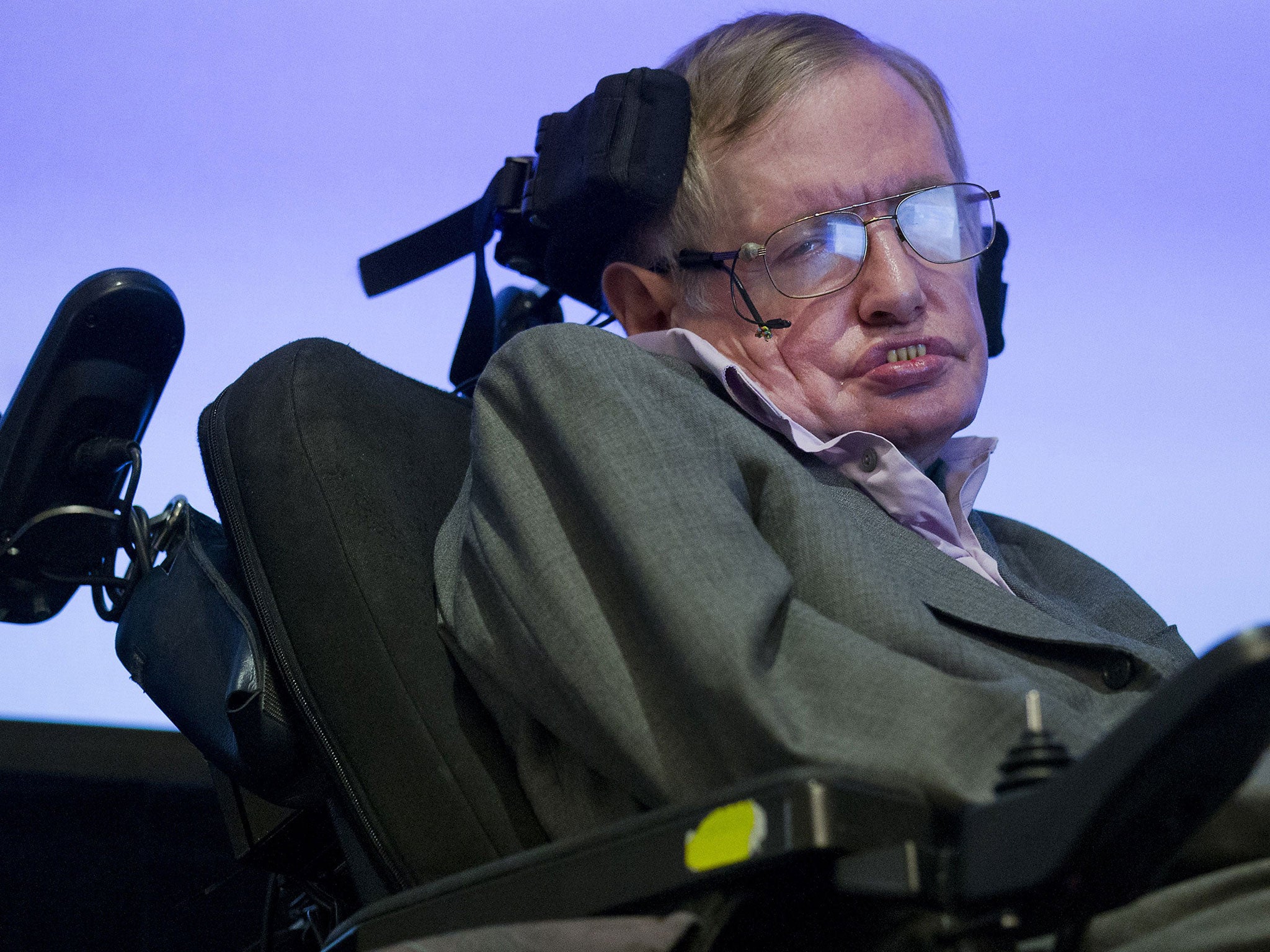Stephen Hawking publishes paper on black holes that could get him 'a Nobel prize after all'
The most prestigious award in science is only given to those who have experimental evidence of their work — and Professor Hawking may just have published that

Your support helps us to tell the story
From reproductive rights to climate change to Big Tech, The Independent is on the ground when the story is developing. Whether it's investigating the financials of Elon Musk's pro-Trump PAC or producing our latest documentary, 'The A Word', which shines a light on the American women fighting for reproductive rights, we know how important it is to parse out the facts from the messaging.
At such a critical moment in US history, we need reporters on the ground. Your donation allows us to keep sending journalists to speak to both sides of the story.
The Independent is trusted by Americans across the entire political spectrum. And unlike many other quality news outlets, we choose not to lock Americans out of our reporting and analysis with paywalls. We believe quality journalism should be available to everyone, paid for by those who can afford it.
Your support makes all the difference.Stephen Hawking has published what he claims could be evidence that his theories on black holes are true — a publication that could win him the Nobel prize.
The physicist hinted last year that he may have solved the black hole information paradox, which is concerned with the apparent problem of what happens to matter when it goes into a black hole.
Professor Hawking has published a paper outlining his theory that the solution to the paradox could be that “hairs” are left on the edge of the black hole. That creates a kind of hologram of what went into it, meaning that it can be conserved.
Those claims, made last year, were a part of Professor Hawking’s long-running work on black holes. But it was a grand claim that didn’t at the time get published — but that work is now available.
The new work concerns a decades-old debate about whether black holes are “hairy” or “bald”. If they are bald they would preserve nothing of what fell into them — but if they are hairy, as Professor Hawking proposes, bits of information would get left on the edges.
Hairy black holes would mean that each of them would be a little different. Each of the black holes would have tiny differences, and preserve small parts of information.
The new work — which is written with Cambridge University’s Malcolm J Perry and Harvard’s Andrew Strominger — claims to be able to show concrete proof of that argument. That would be important because it would put Professor Hawking in line for a Nobel, which can’t be won without experimental evidence of a scientist’s claims.
Professor Hawking told comedian Dara O'Briain during a lecture that he will not be able to spot Hawking radiation coming out of black holes. But another kind of radiation might be detectable, leading to prove of the theory.
"I am now studying whether one might detect Hawking radiation in primordial gravitational waves,” he said, reported The Times. “So I might get a Nobel prize after all."
But some have already criticised Professor Hawking’s paper, which has not gone through a formal peer-review process.
"I am not at all convinced that the new idea proposed by Hawking, Perry, and Strominger solves the information loss problem," Sabine Hossenfelder of the Nordic Institute for Theoretical Physics wrote on her blog. "But it seems an interesting avenue that is worth further exploration."
Join our commenting forum
Join thought-provoking conversations, follow other Independent readers and see their replies
Comments